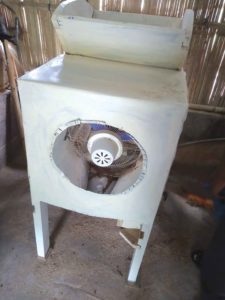By Gratia Dkhar, Naphishisha Nongsiej & Bhogtoram Mawroh
What comes to mind when we hear of names like Bill Gates, Steve Jobs, Mark Zuckerberg and Elon Musk? All these stalwarts are considered to be great ‘innovators’ of modern times. But many are confused about the difference between innovators and inventors.
Charles Babbage, known as the Father of Computer, was an English mechanical engineer who originated the concept of a programmable computer. He conceptualised and invented the first mechanical computer in the early 19th century. Jobs along with his co-founder Steve Wozniak created Apple I, a personal computer with no monitor, keyboard and mouse. Babbage invented the computer while Jobs improved on it. In simple terms, invention is something that has been created for the first time and innovation is when someone improves or makes a significant contribution to something that has already been invented.
In history, one will find many famous names that fall in one or both the categories. One field, however, does not receive the attention it deserves and that is agriculture. When it does, there is an emphasis on the contribution of modern science and technology.
Innovation in agriculture did not start with the development of the technology behind the Green Revolution. It has a much longer antecedent. Agriculture was discovered approximately 10,000 years ago when early people started domesticating some of the plants brought from the wild. After that, it did not take very long for civilisations to emerge. Whether it is the Mesopotamian, Egyptian, Chinese, Aztecs, Maya, Incas or Indus civilisation, the one thing all had in common was that they all were based on innovations in agriculture. These were based on innovations in farming systems, seeds and tools used for agriculture.
In Meghalaya, we have at least four traditional farming systems — pynthor (wet paddy cultivation), bun (terraces), rep shyrtie (shifting cultivation) and kper (home garden). The tools used in them are a diverse set like mohkhiew (spade), wait (machete), side (ax), pdung (winnowing tray), knup (rain shield) and tari (knife). Rice and potato, the two staple foods that people in the state enjoy, were like others domesticated from the wild.
 Presently, more than 40,000 varieties of rice are said to exist with the number of potato varieties being a modest 4,000. All this is a testament to the ingenuity of the people engaged in agriculture (including the indigenous farmers of Meghalaya) and the innovation that has been going on for thousands of years. This process has not stopped and is still going on and one such innovator is Enock Masynting from Khliehumstem village in Bhoirymbong block of Ri Bhoi.
Presently, more than 40,000 varieties of rice are said to exist with the number of potato varieties being a modest 4,000. All this is a testament to the ingenuity of the people engaged in agriculture (including the indigenous farmers of Meghalaya) and the innovation that has been going on for thousands of years. This process has not stopped and is still going on and one such innovator is Enock Masynting from Khliehumstem village in Bhoirymbong block of Ri Bhoi.
Masynting’s innovation is an example of grassroots innovations which emerge from the knowledge, experience and skills ingrained in communities and individuals living in close relationship with culture and nature. Communities have continually created social innovation and innovative technological approaches to address pressing local problems. For example, as mentioned earlier, farmers over the centuries have experimented in their fields to develop and select more resilient local crops with better yields, devise methods of pest control and design cost-effective technology. In the age of globalisation while the current culture of innovation is more invested in scientific inventions and optimisation of technologies, these groups of grassroots innovators have shown their capacity in paving ways to mitigate the challenges in their daily lives.
Born to Mureless Kharsahnoh and Roslina Masynting, 21-year-old Enock is the fourth of eight children. He has a deep interest in agriculture. “Nga kit khia bad smatiaka rep kariang (I am passionate about farming and I take full responsibility),” he says. While pursuing Bachelor’s Degree in Education from Eastern Ri Bhoi College, he helped his father, a participatory guarantee system farmer, in his fields and travelling across the state to meet with potential business partners. He often helped out in the rice mill that the family owns and it was here that he developed his low-cost winnowing machine.
The rice huller that automates the process of removal of chaff from the grain of rice is still the most popular machine in small-scale rice mill set-up in rural communities. The mixture of rice and hull is then manually separated using a traditional winnowing tray called the pdung. This traditional method of winnowing is usually time-consuming and physically strenuous, especially when there is a large quantity of paddy to be hulled. Based on the same principle of wind winnowing, Enock developed a prototype of a winnowing machine to overcome this drudgery.
Great innovators are never satisfied with their creations and always look to improve upon them. The same is the case with Enock. The first prototype requires manual turning of the wheel and direct air current to separate the grains and chaff. Finding it unsatisfactory, he upgraded it with a battery-powered table fan. However, both methods were lacking in performance and he further improvised a third prototype that utilised the air current created by the turning of the rollers. He built a structure consisting of a feeding hopper and three outlets by recycling tin sheets and wooden planks. The open side of the structure is placed closed to the turbine installed onto the pulley of the rice huller. As the huller machine is operated, the rolling of the blades turns the turbines. This creates an airflow that separates the husk from the grain of rice as the mixture of rice and hull falls from the feeding hopper of the winnowing machine. The separated grains of rice are then passed through the outlet into the collecting container and then packaged.

The Meghalaya Basin Development Authority under the National Innovation Fund has also documented this creation. Enock is also a self-taught bamboo artisan and his skills are observed in the handcrafted products like sofa set, bamboo vase and containers among other items which adorn his home. He believes that everyone has the capacity to solve a problem when one has a keen observation and puts in the effort to achieve the goal.
Enock is part of the long tradition of grassroots innovators in agriculture who have made the entire achievements of humanity possible. Indigenous farmers, like those in Meghalaya, have taken seeds, practices, tools and systems from elsewhere, adopted them, brought modifications and in the process made them their own.
As this current COVID-19 pandemic has shown, the concern right now for all is the most basic of human need, food. How it is produced, harvested and processed to make sure it is ready to be consumed is what matters most in these trying times. Enock’s innovation is part of those solutions.
Grassroots innovators like Enock have the capacity to transform and contribute to the ecosystem of rural innovation. Their creations evolved from localised needs and solutions are innovated using local resources. However, it is observed that most of such rural innovation is limited to small niche and often not cross-pollinated. Harnessing the entrepreneurial aptitude of grassroots innovators will play an important role in ensuring an inclusive and sustainable development. One of the objectives of NESFAS is to look at grassroots innovation and help make them mainstream.
Innovators like Enock are one of such individuals who are very crucial in building a strong and resilient rural economy. As the current COVID-19 crisis has shown, rather than globalisation whose pathways the virus used spread to the different corners of the globe, it is local actions (preventive or mitigating) that are going to be sustainable in the long run. The role of local innovators will be very crucial in this.
(Gratia Dkhar is an associate at NESFAS; Naphishisha Nongsiej is a field coordinator at NESFAS; Bhogtoram Mawroh is a senior associate at NESFAS)



